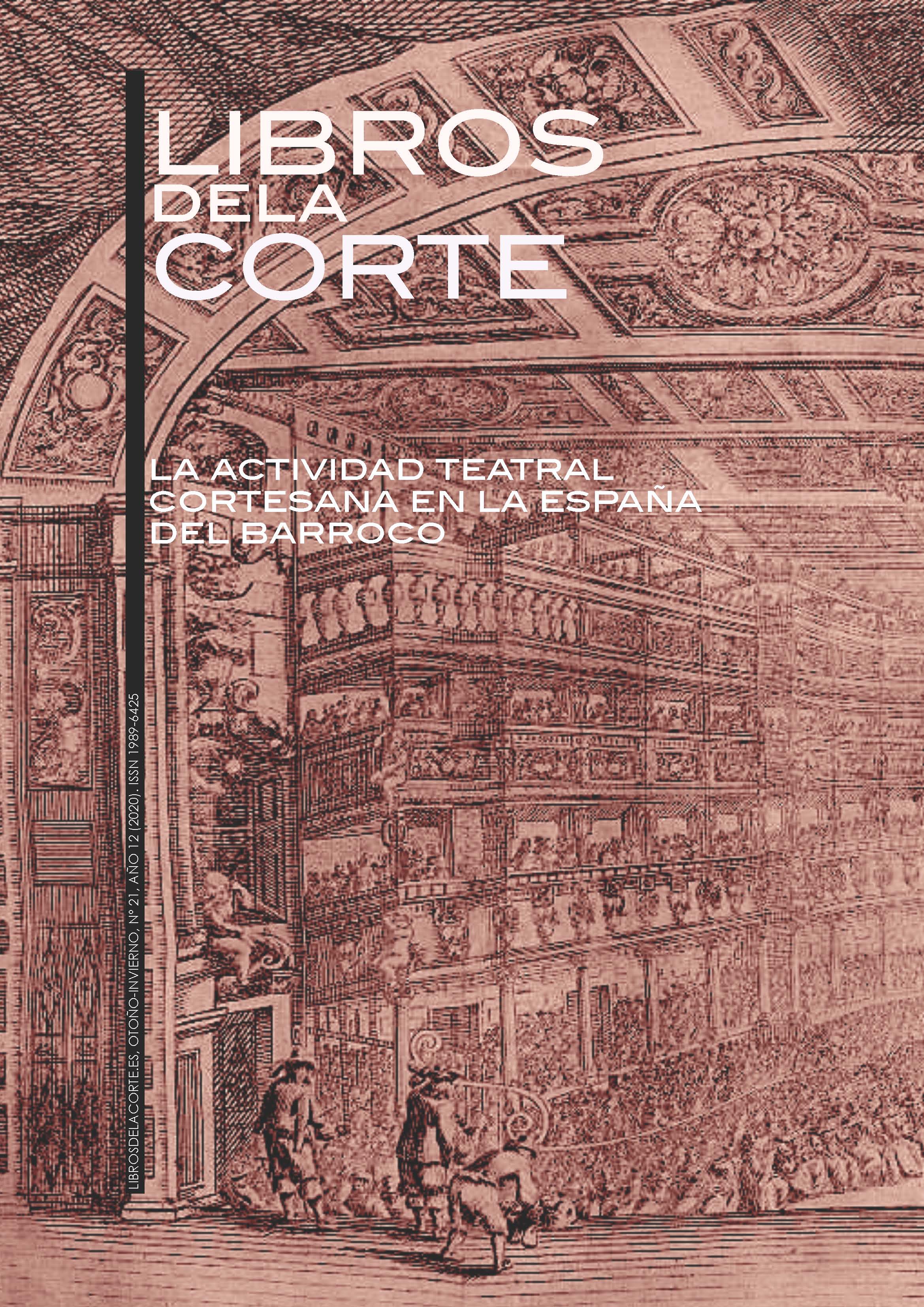The Myth And Its Influence On The Emotional Bond Between The Spectator And The Work In The Musical Theatre Of The Golden Century: Mythological Resources In "Icarus And Daedalus" By Melchor Fernández De León
Keywords:
Ícaro y Dédalo, Melchor Fernández de León, mythology, Golden Age, musical theatre, Psychic Distance
This work is licensed under a Creative Commons Attribution-NonCommercial-NoDerivatives 4.0 International License.
Abstract
The present article proposes an analysis of the treatment of the mythological resources in Melchor Fernández de León‘s Ícaro y Dédalo and its possible influence over the psychic nexus between the audience and the zarzuela. The work method consists in the application of the notion of the ‘Psychic Distance‘, a philosophical concept focused on the emotional engagement during the moment of aesthetic appreciation. With the help of this tool I examine the psychic impulses produced by the usage of mythological material in the elaboration of the argument, the characters and the symbols of the zarzuela. The ultimate goal of this work is to detect reflections of the mentality of the 17th century society laying in the predilection for the mythological subject in the musical theatre by using the example of Ícaro y Dédalo.
Key words: Ícaro y Dédalo, Melchor Fernández de León, mythology, Golden Age, musical theatre, Psychic Distance
Downloads
References
Bullough, Edward, "Aesthetic Distance as a Factor in Art and an Aesthetic Principle", British Journal of Psychology, 5 (1912): 87-117. https://doi.org/10.1111/j.2044-8295.1912.tb00057.x
Campbell, Joseph. The Hero with a Thousand Faces (New Jersey, Princeton University Press, [1949] 2004).
Campbell, Joseph, (en colab. Bill Moyers). The Power of Myth (EE. UU., Anchor Edition, [1988]1991).
Díez Borque, José María, Sociología de la comedia española del siglo XVII (Madrid, Cátedra, 1976).
Díez Borque, José María, Sociedad y teatro en la España de Lope de Vega (Barcelona, Antoni Bosch, 1978).
Díez Borque, José María, Historia del teatro en España, Tomo I, Edad Media, Siglo XVI, Siglo XVII (Madrid, Taurus Ediciones, 1983).
Domínguez Ortiz, Antonio, La sociedad española en el siglo XVII (Universidad de Granada, vol. 2, 1992).
Durand, Gilbert, The Anthropological Structures of the Imaginary (Brisbane: Boombana Publications, [1992] 1999).
Fernández de León, Melchor, Ícaro y Dédalo, ed. Comedias nuevas, parte cuarenta y ocho. Escogidas de los mejores ingenios de España (Madrid, Bernardo de Villa-Diego, ([1684] 1704): 447-493.
Fernández San Emeterio, Gerardo, Melchor Fernández de León: la sombra de un dramaturgo.
Datos sobre vida y obra (Madrid, Iberoamericana, 2011)
García Gual Gual, Carlosarlos, "Mitología y literatura en el mundo griego", Amaltea. Revista de mitocríticamitocrítica, 0 (2008): 1 1-11.
González García, Juan Luis, Imágenes sagradas y predicación visual en el Siglo de Oro (Madrid, Ediciones Akal, 2015).
Langer, Susanne K., Philosophy in a New Key (Harward University Press, [1948] 1954).
Langer, Susanne K., Feeling and Form (Charles Scribner's Sons New York, 1953).
Maravall, José Antonio, Teatro y literatura en la sociedad barroca (Barcelona, Editorial Crítica, [1972] 1990).
Maravall, José Antonio, La cultura del Barroco (Barcelona, Ariel, 1998).
Molina Jiménez, Mª Belén, "Literatura y música en el Siglo de Oro español. Interrelaciones en el Teatro Lírico" (Tesis Doctoral, Depósito institucional de la Universidad de Murcia, 2005).
Morabito, María Teresa, "El tema de la caída en el Siglo de Oro" (AISO. Actas VI, 2002) 47-52.
Odin, Steve, Artistic Detachment in Japan and the West: Psychic Distance in Comparative Aesthetics (University of Hawaii Press, 2001).
https://doi.org/10.1515/9780824861506
Reiss, Timothy, "Psychical Distance and Theatrical Distancing in Sartre's Drama", Yale French Studies, 46 (Yale University Press, 1971): 5-16. https://www.jstor.org/stable/2929602?seq=1 (consultado el 26 de julio de 2020). https://doi.org/10.2307/2929602
Rich Greer, Margaret, ed. crit., La estatua de Prometeo (Kassel Edition Reichenberger, 1986).
Rozenbergaite, Ieva Emilija, "La distancia psíquica como herramienta para analizar el teatro musical del Siglo de Oro", Diablotexto Digital, 7 (Universitat de València, 2020): 33-53. https://ojs.uv.es/index.php/diablotexto/article/view/16718/15497 (consultado el 26 de julio de 2020). https://doi.org/10.7203/diablotexto.7.16718
Sabik, Kazimierz, "El tema del amor en los dramaturgos cortesanos de la escuela de Calderón", en: Atti del XX Convegno di Associazione Ispanisti Italiani, coord. Domenico Antonio Cusato, Loretta Frattale, vol. 1, (2002): 287-296.
Vélez de Guevara, Juan, Los celos hacen estrellas, ed. John E. Varey, Normand D. Shergold y Jack Sage (Londres, Tamesis Books Limited, [1672] 1970).
